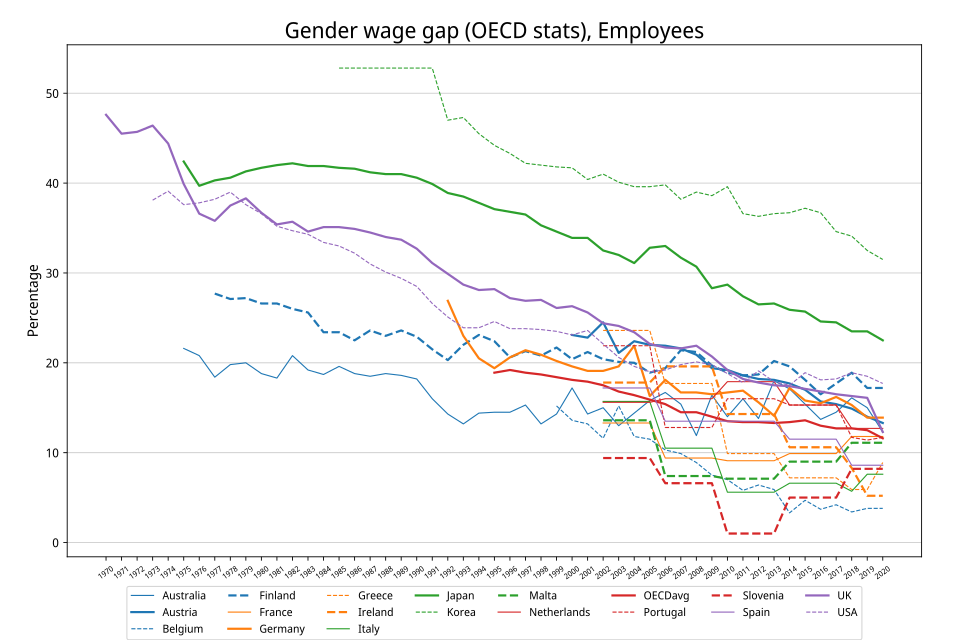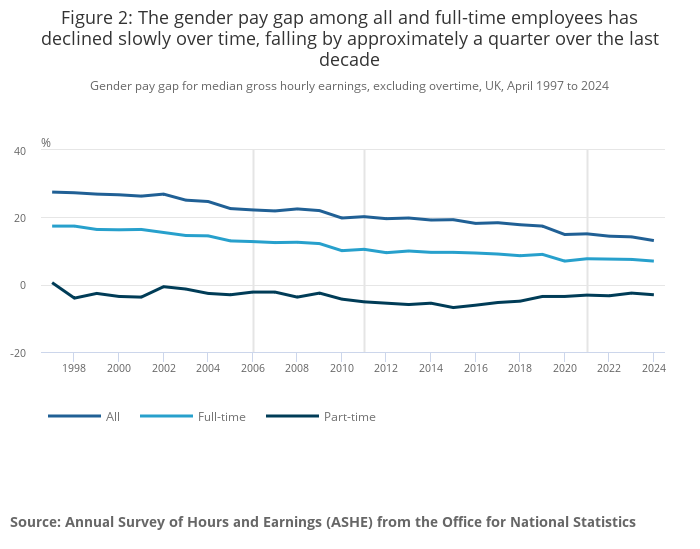AQA Specification focus:
‘Assess the advantages and disadvantages of wage discrimination for workers, employers and the economy as a whole.’
Wage discrimination occurs when different groups of workers receive different pay for similar work. Its effects extend beyond individuals, influencing firms’ costs and broader economic efficiency.
Understanding Wage Discrimination
Definition of Wage Discrimination
Wage Discrimination: The practice of paying different wages to workers who provide the same productivity or output, based on characteristics such as gender, ethnicity, or age.
Wage discrimination can occur within the same firm or across industries. It may arise due to employer bias, customer preferences, or institutional barriers such as weak labour laws.
Advantages of Wage Discrimination
For Employers
Some employers may benefit from wage discrimination:
Reduced labour costs: Paying certain groups less lowers overall wage expenditure.
Flexibility in wage setting: Employers may adapt wages to perceived labour market conditions.
Profit maximisation: If discrimination reduces costs, firms may achieve higher profit margins.
For Workers
Although generally harmful, some groups may benefit:
Favoured groups (those who are not discriminated against) may enjoy relatively higher pay and job opportunities.
Market advantages: Discrimination can protect certain groups’ wages by limiting competition from underpaid workers.
For the Economy
In limited contexts, there may be some perceived economic advantages:
Cost competitiveness: Firms facing international competition may reduce labour costs via wage discrimination, temporarily improving export competitiveness.
Short-term employment gains: Some workers may remain employed even at lower wages if firms would otherwise reduce headcount.
Disadvantages of Wage Discrimination
For Workers
The negative effects are substantial:
Lower wages: Discriminated groups earn less despite equal productivity.

A multi-country OECD chart showing unadjusted gender wage gaps over time. It highlights persistent pay differentials across economies, illustrating how discriminated groups consistently earn less despite equal productivity. This includes additional cross-country comparisons not required by the specification but useful for context. Source
Reduced job opportunities: Certain workers may face exclusion from high-paying sectors.
Weaker incentives: Workers may be discouraged from investing in skills and education if they expect discrimination.
Inequality: Wage discrimination contributes directly to persistent income inequality.
For Employers
Although short-term gains are possible, longer-term disadvantages arise:
Misallocation of talent: By underpaying or excluding certain workers, firms may not fully utilise available skills.
Reduced morale: Workplace dissatisfaction and higher turnover may occur among discriminated workers.
Legal risks: Anti-discrimination laws increase potential costs through fines or reputational damage.
Lower productivity: Discrimination can lead to inefficiency if pay is not linked to productivity.
For the Economy
The macroeconomic effects are highly damaging:
Resource misallocation: Skilled workers may end up in lower-paying jobs, reducing economic efficiency.
Lower aggregate demand: Discriminated workers have reduced disposable income, lowering overall consumption and growth.
Social costs: Persistent wage inequality can increase poverty and require higher welfare spending.
Reduced innovation: Barriers to advancement may prevent talented individuals from contributing fully to the economy.
The wider economy suffers from reduced efficiency, lower consumption, and increased inequality.

A line chart from the ONS showing the UK gender pay gap for all, full-time, and part-time employees (1997–2024). It demonstrates a gradual decline but persistent gaps, reinforcing the macroeconomic costs of wage discrimination. Source
Factors Influencing the Scale of Disadvantages
Labour Market Structure
In competitive markets, wage discrimination is harder to sustain as firms risk losing skilled workers.
In monopsony markets, a single employer may exploit power to enforce discriminatory wages.
Legal and Institutional Frameworks
Strict anti-discrimination legislation can reduce wage gaps.
Weak enforcement may allow discrimination to persist, particularly in informal sectors.
Social Norms and Preferences
Cultural attitudes may perpetuate discrimination, influencing both employers’ decisions and workers’ acceptance of lower wages.
Assessing Wage Discrimination
When weighing the overall impact, it is important to note:
While employers may gain short-term cost advantages, these are outweighed by the long-term inefficiencies created.
Workers in discriminated groups face systematic disadvantages in wages and opportunities.
The wider economy suffers from reduced efficiency, lower consumption, and increased inequality.
Thus, although wage discrimination may provide narrow benefits to specific groups, it largely creates negative consequences for individuals, firms, and economic performance.
FAQ
Wage discrimination requires limited competition, meaning firms or employers have the power to set different wages without losing workers. This often occurs in monopsony markets, where one employer dominates.
Additionally, imperfect information about workers’ productivity can allow employers to justify pay gaps. Social norms and weak enforcement of anti-discrimination laws also create conditions where discrimination can persist.
Discriminated groups may feel discouraged from moving into higher-paying sectors if they expect continued wage inequality.
This reduces geographical and occupational mobility, leading to:
Concentration of certain groups in lower-paying jobs.
Lower efficiency in how labour resources are allocated.
Reduced incentives to invest in skills if pay gains are unlikely.
Yes. If workers anticipate being underpaid despite equal productivity, they may choose not to invest in costly education or training.
This creates long-term issues:
Lower skill acquisition in the workforce.
Fewer qualified workers in high-demand industries.
Reduced innovation and slower economic growth.
Employers may calculate that the short-term financial benefits of paying lower wages outweigh the risks of penalties.
Cultural attitudes within a firm, biased customer preferences, or weak enforcement of laws can also sustain discrimination. In some cases, smaller firms may believe they are less likely to face legal scrutiny.
Governments can implement and enforce anti-discrimination legislation, ensuring penalties deter discriminatory practices.
Other strategies include:
Promoting wage transparency to highlight unjustified pay differences.
Supporting education and training programmes for underrepresented groups.
Encouraging union activity to strengthen workers’ bargaining power.
Practice Questions
Define wage discrimination and give one example of how it might occur in the labour market. (2 marks)
1 mark for a correct definition: wage discrimination is when workers of equal productivity are paid differently based on characteristics such as gender, ethnicity, or age.
1 mark for a valid example: e.g. women being paid less than men for the same job role, or ethnic minorities facing lower wages compared to equally productive majority workers.
Assess the disadvantages of wage discrimination for the economy as a whole. (6 marks)
1–2 marks: Identification of at least one disadvantage for the economy (e.g. reduced efficiency, lower aggregate demand, higher inequality).
3–4 marks: Explanation of how these disadvantages affect the wider economy (e.g. misallocation of resources reduces productivity, inequality lowers consumer spending, innovation is limited by barriers to advancement).
5–6 marks: Developed assessment with depth and breadth, possibly including multiple disadvantages with linked reasoning. May include evaluative comment such as short-term cost competitiveness versus long-term inefficiency.

